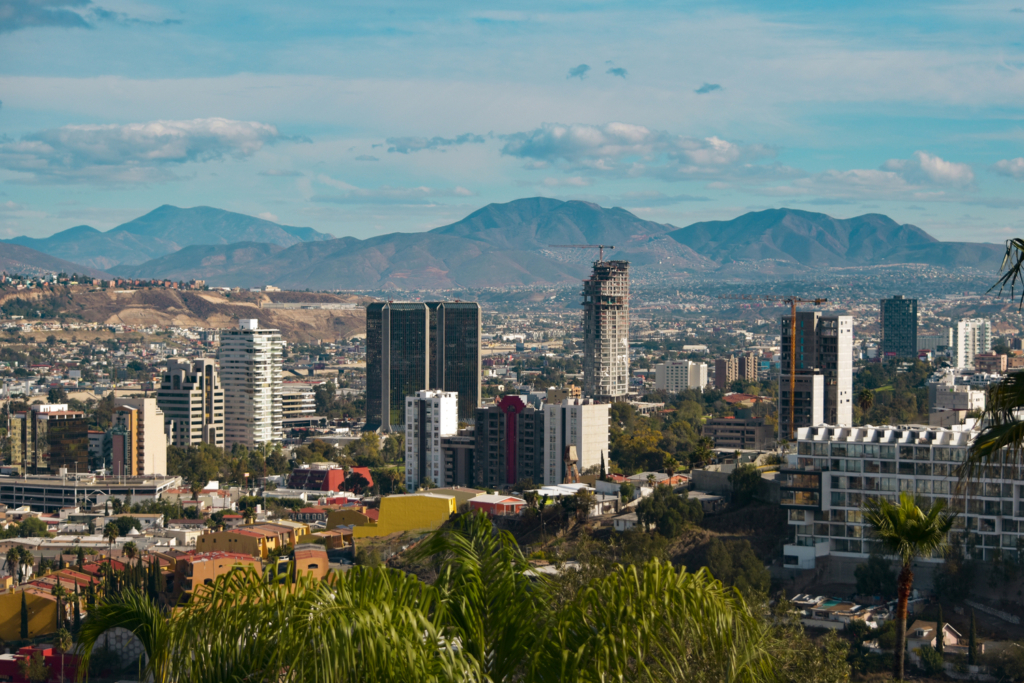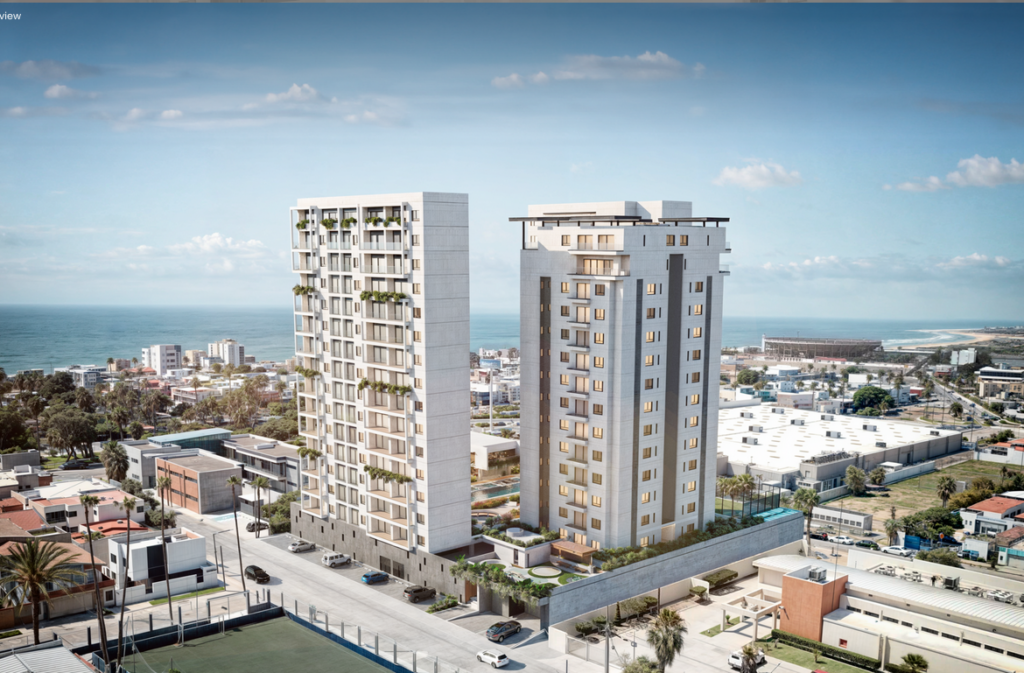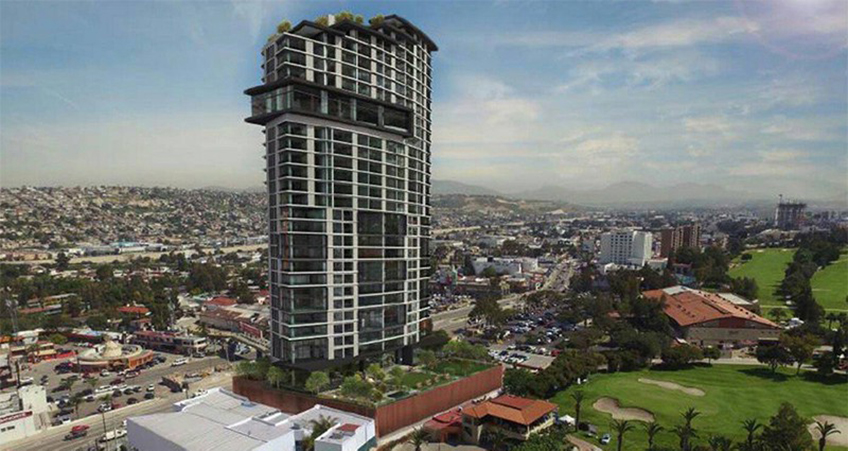Tijuana, Mexico, has emerged as a hotspot for expatriates and digital nomads seeking affordability and proximity to the United States. The cost of living in Tijuana in 2024 offered significant savings compared to major U.S. cities, but what does that mean in U.S. dollars, and what can we expect for 2025? Here’s a breakdown of the current trends and future projections.

Cost of Living in Tijuana in 2024
In 2024, the average monthly cost for a single person in Tijuana ranged from $1,200 to $1,800 USD, depending on lifestyle choices. Rent for a one-bedroom apartment in a safe, central area averaged $500 to $800 USD, compared to $2,500 to $3,500 USD in Los Angeles or $3,000 to $4,500 USD in New York City. Utilities and internet typically cost around $100 to $150 USD, significantly lower than $150 to $250 USD in Los Angeles or $200 to $300 USD in New York City.

Groceries were another highlight of affordability, with monthly expenses landing between $200 and $300 USD, much less than $400 to $600 USD in San Francisco or $350 to $500 USD in Chicago. Dining out remained accessible, with meals at mid-range restaurants costing $10 to $20 USD per person, compared to $20 to $50 USD in Seattle or $25 to $60 USD in San Francisco.
Transportation was another budget-friendly aspect. Public transit and taxis averaged $30 to $50 USD monthly, a fraction of $100 to $200 USD in Los Angeles or $120 to $250 USD in New York City. Owning a car added approximately $100 to $200 USD for gas and insurance. Healthcare, often a concern for expats, was also affordable, with high-quality private clinic visits costing as little as $40 USD, far below the $150 to $300 USD typical in Houston or $200 to $400 USD in New York City.
Cost Comparison: Tijuana vs. Major U.S. Cities
| Category | Tijuana | Los Angeles | New York City | Chicago | San Francisco | Seattle | Houston | Phoenix | Miami | Philadelphia |
|---|---|---|---|---|---|---|---|---|---|---|
| Rent (1-bedroom) | $500 – $800 USD | $2,500 – $3,500 USD | $3,000 – $4,500 USD | $1,800 – $2,800 USD | $2,800 – $4,200 USD | $2,000 – $3,200 USD | $1,300 – $2,200 USD | $1,200 – $2,000 USD | $2,000 – $3,500 USD | $1,500 – $2,500 USD |
| Utilities & Internet | $100 – $150 USD | $150 – $250 USD | $200 – $300 USD | $120 – $200 USD | $150 – $250 USD | $140 – $220 USD | $110 – $180 USD | $100 – $160 USD | $120 – $200 USD | $130 – $190 USD |
| Groceries | $200 – $300 USD | $400 – $600 USD | $500 – $700 USD | $350 – $500 USD | $450 – $650 USD | $400 – $600 USD | $350 – $500 USD | $300 – $450 USD | $400 – $600 USD | $350 – $500 USD |
| Dining Out | $10 – $20 USD (per meal) | $20 – $50 USD (per meal) | $30 – $60 USD (per meal) | $15 – $40 USD (per meal) | $25 – $60 USD (per meal) | $20 – $50 USD (per meal) | $15 – $35 USD (per meal) | $12 – $30 USD (per meal) | $20 – $50 USD (per meal) | $15 – $40 USD (per meal) |
| Transportation | $30 – $50 USD (public transit) | $100 – $200 USD | $120 – $250 USD | $90 – $150 USD | $100 – $200 USD | $100 – $180 USD | $80 – $150 USD | $70 – $120 USD | $90 – $160 USD | $85 – $140 USD |
| Healthcare (visit) | $40 USD (private clinic) | $150 – $300 USD | $200 – $400 USD | $100 – $250 USD | $180 – $350 USD | $150 – $300 USD | $120 – $250 USD | $100 – $200 USD | $150 – $300 USD | $120 – $250 USD |
| Safety Index | 60 (Higher is Safer) | 55 | 50 | 58 | 52 | 56 | 57 | 59 | 54 | 58 |
Safety in Tijuana: A Growing Trend
Tijuana has long carried a reputation for safety concerns, but recent years have shown marked improvement. According to a widely accepted global safety index, Tijuana’s safety score of 60 in 2024 compares favorably to many large U.S. cities, such as New York City (50) and Los Angeles (55). This trend reflects increased investment in law enforcement and community initiatives, particularly in tourist and expatriate-heavy areas like Zona Rio and Playas de Tijuana.
Looking forward to 2025, the city is expected to maintain or even improve this trend as further resources are allocated to public safety. Programs targeting urban renewal and enhanced surveillance in key neighborhoods aim to provide a sense of security comparable to or better than many urban centers in the U.S. This makes Tijuana increasingly appealing not only for short-term visitors but also for long-term residents and investors.
Factors Influencing Costs
Tijuana’s cost of living remained stable throughout 2024 due to favorable exchange rates and a growing local economy. However, inflation affected some goods and services, particularly imported items. The continued development of luxury real estate also drove up rental prices in high-demand neighborhoods like Playas de Tijuana and Zona Rio, where rents averaged $500 to $800 USD compared to $1,200 to $2,000 USD in Phoenix or $1,300 to $2,200 USD in Houston.

What to Expect in 2025
Looking ahead, Tijuana is expected to experience moderate increases in living costs. Rent prices may rise by 5-10%, potentially aligning closer to $900 USD for premium locations. Utilities and transportation costs are likely to remain stable, continuing their significant affordability advantage over cities like Seattle ($100 to $180 USD for public transit).
The Mexican peso’s exchange rate against the U.S. dollar will be a key factor to watch. A strengthening peso could slightly reduce the affordability for American residents, while a stable or weaker peso would maintain Tijuana’s appeal as a budget-friendly destination.
Opportunities for Real Estate Investment
The rising demand for housing in Tijuana, driven by the influx of expatriates and remote workers, presents a significant opportunity for real estate investment. Neighborhoods like Zona Rio and Playas de Tijuana are particularly attractive due to their amenities and proximity to the U.S. border. With rental prices expected to climb, investors can capitalize on the growing need for high-quality accommodations, making Tijuana a lucrative market for both short-term and long-term property investments.

Conclusion
Tijuana in 2024 offered an attractive cost of living for expats seeking to maximize their purchasing power. While 2025 may bring minor increases in costs, the city is expected to remain an appealing option for those looking to enjoy a vibrant lifestyle without breaking the bank. Whether you’re considering relocating or planning an extended stay, understanding these trends can help you budget effectively and make the most of your time in this dynamic border city.


